Seakeeper 5 / 6 Installation Manual (90402-5) 6/5-233-5847 to Current
3.0 Electrical Installation
3.1 Electrical Installation Introduction
This section for electrical installation explains how to mount the electrical equipment and how to connect the electrical cables.
Reference Documents & Drawings:
- 90396 – Seakeeper 6 / 5 Cable Block Diagram
- 90403 – Seakeeper 6 / 5 Operation Manual
- TB-90191 -Seawater Cooling Pump Recommendations
- 90558 – ConnectBox Helm Mounting Kit
- TB-90640 – ConnectBox Connection Requirements
- Seakeeper Compatibility Technical Bulletins
- Optional 5″ Touch Display
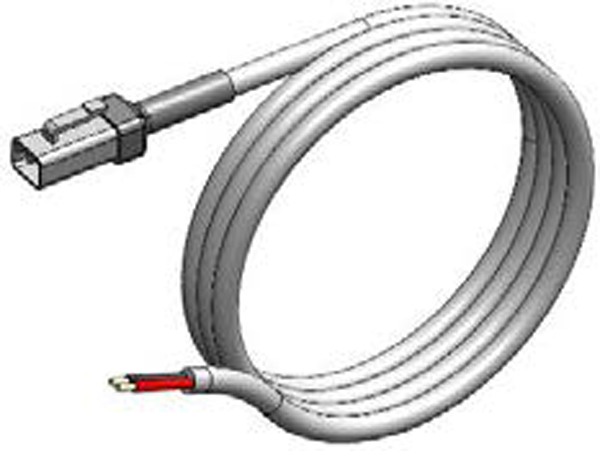
16.4 ft (5 m), P/N 20248
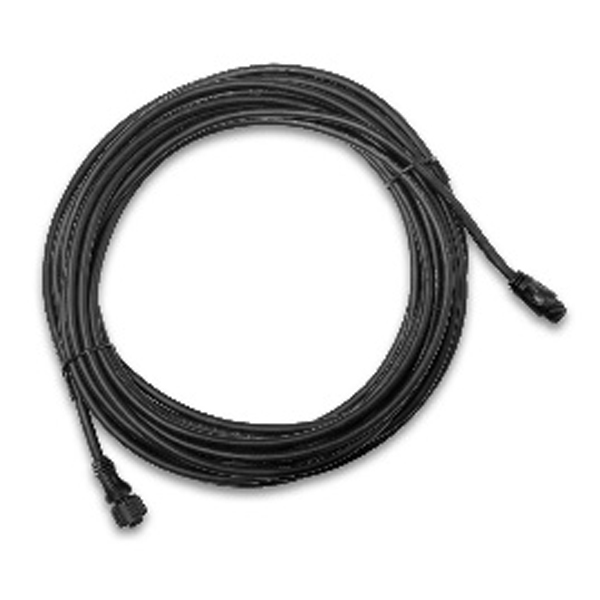
82 ft (25 m), P/N 30355
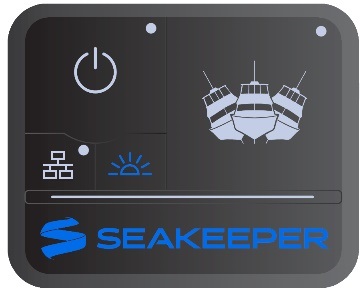
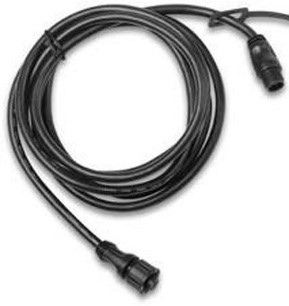
19.7 ft (6 m), P/N 30332
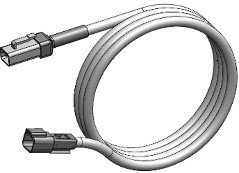
16.4 ft (5 m), P/N 20334

16.4 ft (5 m), P/N 30327
Figure 1 – Electrical Equipment for Seakeeper 6
3.2 Electrical Equipment Power Connections
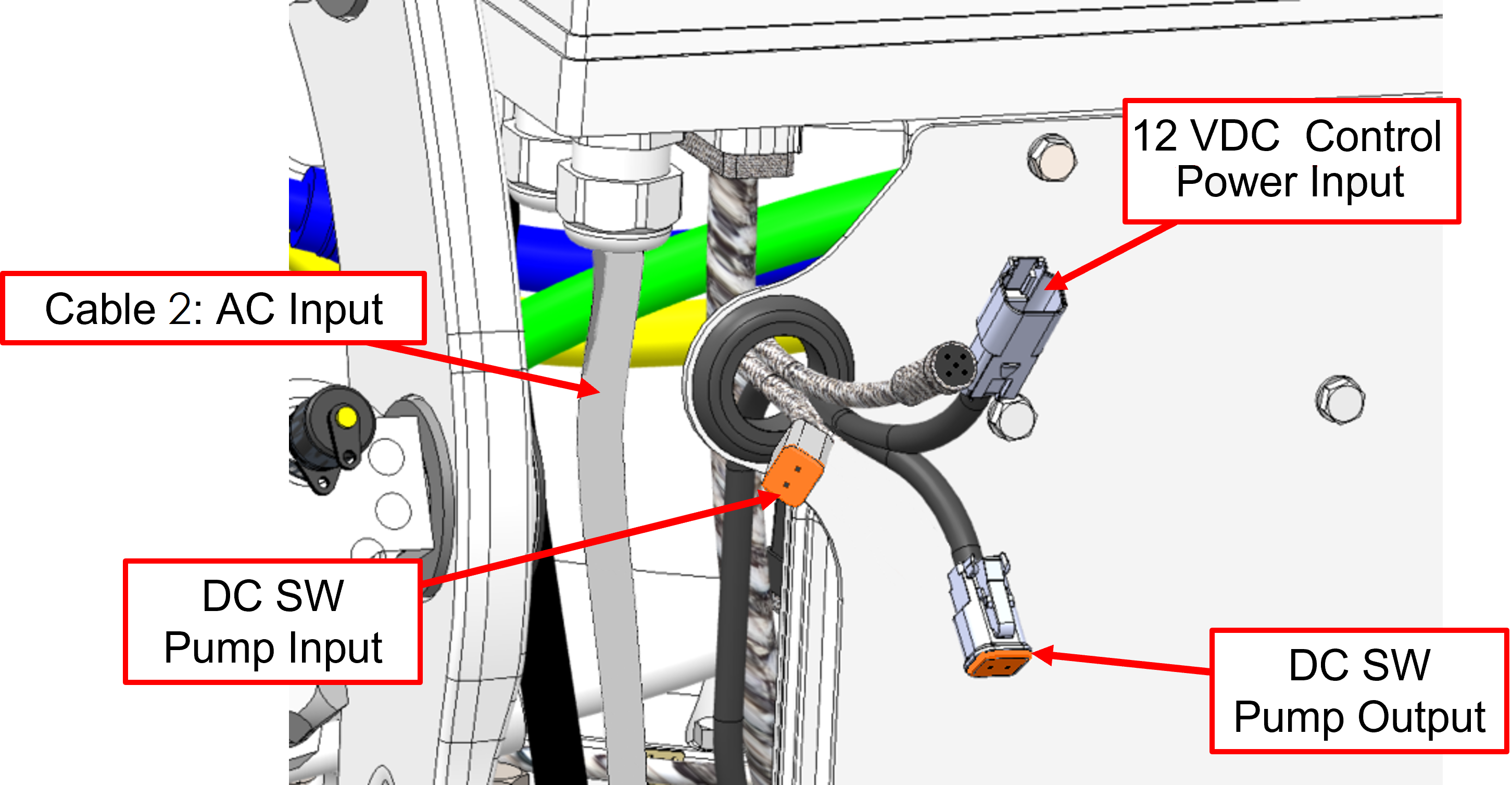
AC Input Power Source Requirements
- Either of two AC input voltages are acceptable:
- 110 – 120 VAC (nominal) (+/- 10%), 1 Phase, 50/60 Hz, 30 A
- 208 – 230 VAC (nominal) (+/- 10%), 1 Phase, 50/60 Hz, 20 A
- A separate circuit breaker should be used for each Seakeeper Drive Box in multiple Seakeeper installations.
Drive Box AC Power Input Connection Instructions
- Cable: 3 x 10 AWG (3 x 6mm2 CSA), 10 ft (3 m) length, Seakeeper supplied pre-installed.
- Locate AC Power Input Cable to the Drive Box at the outward of two cable glands per figure below.
- Connect AC wires to a 230 V, 20 A (or 110 V, 30 A), double-pole Circuit Breaker at an AC power distribution panel.
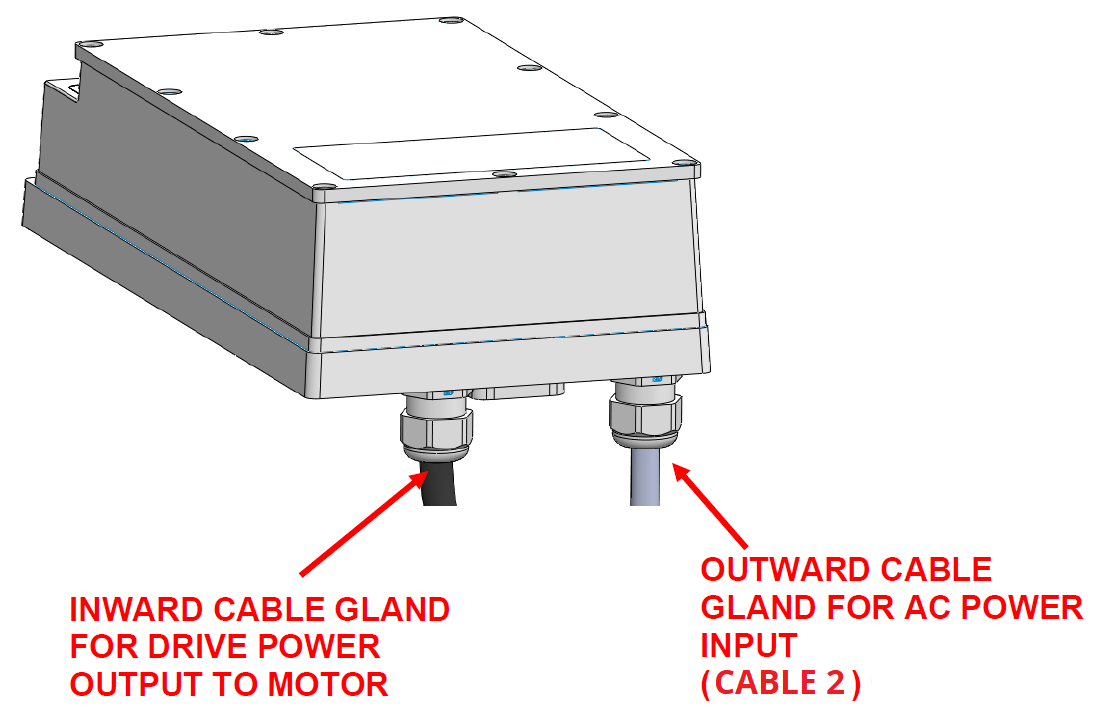
Low Current 12 V Power Input
- One 12 VDC, 15 A (Customer supplied) for Seakeeper Control Power, AND
- One 12 VDC, 15 A OR 24 VDC, 10 A (Customer supplied) for DC Seawater Pump.
- A dedicated breaker should be used for Seakeeper control and Seawater Pump power for each Seakeeper unit.
Seakeeper DC Power Connection Instructions

Reversing polarity on the DC power input to the Seakeeper can result in damaging the electronics in the control system.
- 12 VDC, 15 A, 2 x 12 AWG (3 x 4 mm2 CSA) customer supplied.
- Install Seakeeper provided DC Power Input Cable, P/N 20248 (shown in Drawing No.90396):
- Route DC Power Input Cable to DC Power Distribution Panel.
- Terminate positive (B+, Red) conductor through dedicated over-current protection device (customer supplied) and a dedicated Seakeeper isolation switch (customer supplied) then directly to battery plus terminal.
- Terminate negative (B-, Black) conductor directly to battery negative terminal or negative bus.
- Before connecting DC Power Input Cable to Seakeeper, check for proper voltage and polarity with a DC multimeter using Figure 3 below.
- Connect DC Power Input Cable to 12 VDC input receptacle on Seakeeper.
- Install Seakeeper provided DC Power Input Cable, P/N 20248 (shown in Drawing No.90396):
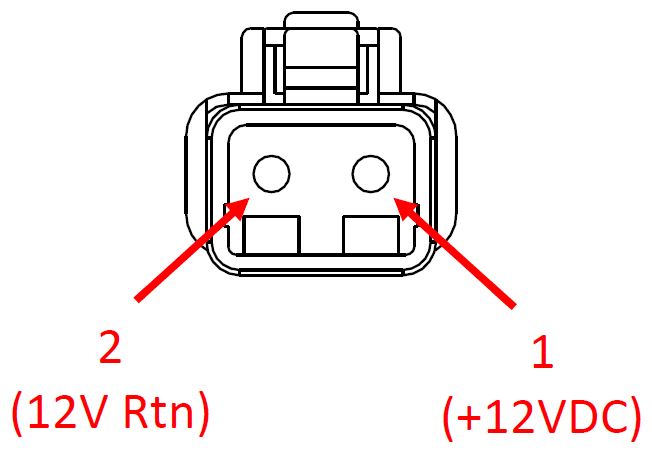

When energizing DC power the first time, if Display does not power up immediately then disconnect and inspect connector polarity.
DC Seawater Pump 12 VDC Power Input Connection Instructions

Connecting the DC Seawater pump in any other manner than recommended by Seakeeper may cause internal failure.
- Install DC SW Pump Input Power Cable (P/N: 30327) to Seakeeper 6 “SW Pump DC In” (shown in Drawing No. 90396) with overcurrent protection corresponding to seawater pump selected.
- Connect the 16 AWG positive conductor (red) through dedicated overcurrent protection device (customer-supplied), maximum of 15 A, to dedicated battery isolation switch.
- 24 VDC, 10 A max can be used for Seawater Pump power.
- Connect the 16 AWG negative conductor (black) directly to battery negative terminal or DC main negative bus bar.
- Before connecting DC SW Pump Input Power Cable to Seakeeper, check for proper voltage and polarity with a DC multimeter using Figure 4 below.

- Connect DC SW Pump Power Input Cable to Seawater Pump 12 VDC In connector on the Seakeeper, DEUTSCH DT04-2P connector.
DC Seawater Pump 12 VDC Power Output Connection Instructions
- Connect DC SW Pump Power Output Cable (P/N 20334) to the Seakeeper 6 “SW Pump 12VDC Out” for DC power output to the seawater pump.
- Seawater Pump Output Power Cable is a 2 x 16AWG cable, 16 ft (5 m) length, with a size 16 female Deutsch plug.
- Pumps rated at 12 VDC, 15 A maximum (24 VDC, 10 A), customer-supplied, must be configured with a Deutsch DT series, 2-pin receptacle to mate with the connector shown in Figure 5.

- The DC SW Pump Power Output Cable must be routed and installed in the vessel from the Seakeeper 6 “SW Pump 12VDC Out” Deutsch connector (pins end) to the DC seawater pump cable Deutsch connector (socket end).
- Connect DC SW Pump Power Output Cable plug end (socket end) to the customer-supplied receptacle end (pins end). The recommended wiring is shown in Figure 6.
- Contact Seakeeper if desired to install customer-supplied relay on DC SW Pump Power Output Cable to power Seawater Pump.

3.3 Electrical Equipment Ground Connections
Seakeeper to Vessel Ground Connection Instructions
- Connect the Seakeeper foundation ground to vessel ground as shown in Figure 7.
- Install Ground Cable (4 AWG or 22.0 mm2, Customer supplied) from the M6 brass ground stud on the Seakeeper rear brace to a suitable vessel ground.
- EN/IEC 90204-1 Clauses 6.3.3 and 8.2.3
- ABYC E-11 July 2018 Clauses 11.5.2 and 11.16.1.
NOTE: USE ONLY THIS LOCATION FOR GROUNDING THE SEAKEEPER TO THE VESSEL GROUND.

- Ground connection should be made with vessel bonding system, if available. However, the ground is not referring specifically to a bonding system but for outboard boats generally refers to the outboard engine negative terminal. Per ABYC E-11 (2018), Clause 11.5.2.7.4: If the negative side of the DC system is to be connected to the ground, the connection shall be made only from the engine negative terminal, or its bus, to the DC grounding bus. This connection shall be used only as a means of maintaining the negative side of the circuit at ground potential and is not to carry current under normal operating conditions.
- A proper ground connection is critically important for corrosion protection and helps to ensure the ignition protection of the unit by ensuring it does not carry any stray current.

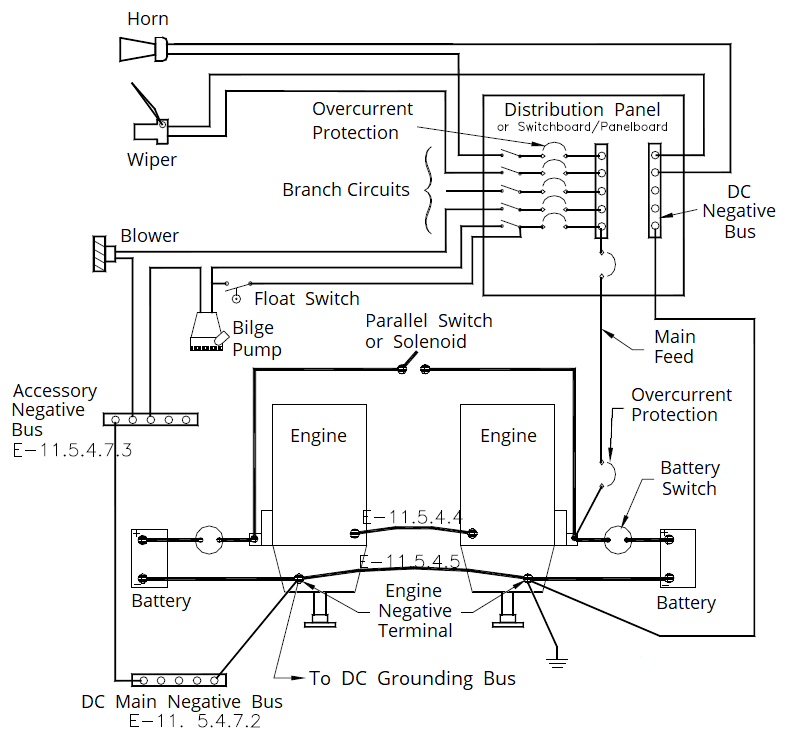
3.4 ConnectBox Display Connections
Seakeeper 6 / 5 Display Options
A display is required with the installation of a Seakeeper 6 / 5 to support the full functionality of the unit through the Seakeeper App in addition to the ConnectBox. The Seakeeper App provides an interface for controlling the Seakeeper or viewing the Settings, Service, Info, and Alarm pages. The Seakeeper ConnectBox can be helm-mounted to provide an additional interface for the control of the Seakeeper but does not replace the need for a Seakeeper compatible display.
The Seakeeper 6 or 5 has several options for establishing a Seakeeper display interface to support the Seakeeper App:
- Preferably, connect the Seakeeper to a compatible Multifunction Display (MFD).
- Install an optional Seakeeper 5″ Touch Display (P/N 90467).
- A combination of a compatible MFD and an optional 5″ Touch Display is also available.
The following figure provides a schematic of the preferred display option. The subsequent sections outline the instructions and references for connecting the Seakeeper 6 in each of these display options.

Connecting to a Compatible MFD
- The Seakeeper 6 can be connected to a variety of available MFD systems. Refer to the Technical Bulletins Section of the Seakeeper Technical Library for manufacturer specific MFD compatibility technical bulletins.
- MFD specific Technical Bulletins will be updated regularly as new MFD systems become compatible. Currently GARMIN, RAYMARINE, NAVICO (Simrad, Lowrance, B&G), and FURUNO offer compatible MFD models.
- Once a compatible MFD has been selected, refer to the appropriate manufacturer specific Technical Bulletin for integration instructions.
- Connect Seakeeper-supplied M12 D-Code, 32.8 ft (10 m), cable (P/N 30330) to MFD manufacturer-specific Ethernet adapter cable. Custom Ethernet cables for specific MFD manufacturers are available through Seakeeper and must be purchased with the Seakeeper 6 if connecting to an MFD.
Connecting to an Optional Seakeeper 5″ Touch Display
If not utilizing a compatible MFD display, a Seakeeper 5” Touch Display must be purchased from Seakeeper. The Seakeeper 5” Touch Display (P/N 90467) includes the components shown in the following figure and will be integrated with the ConnectBox.
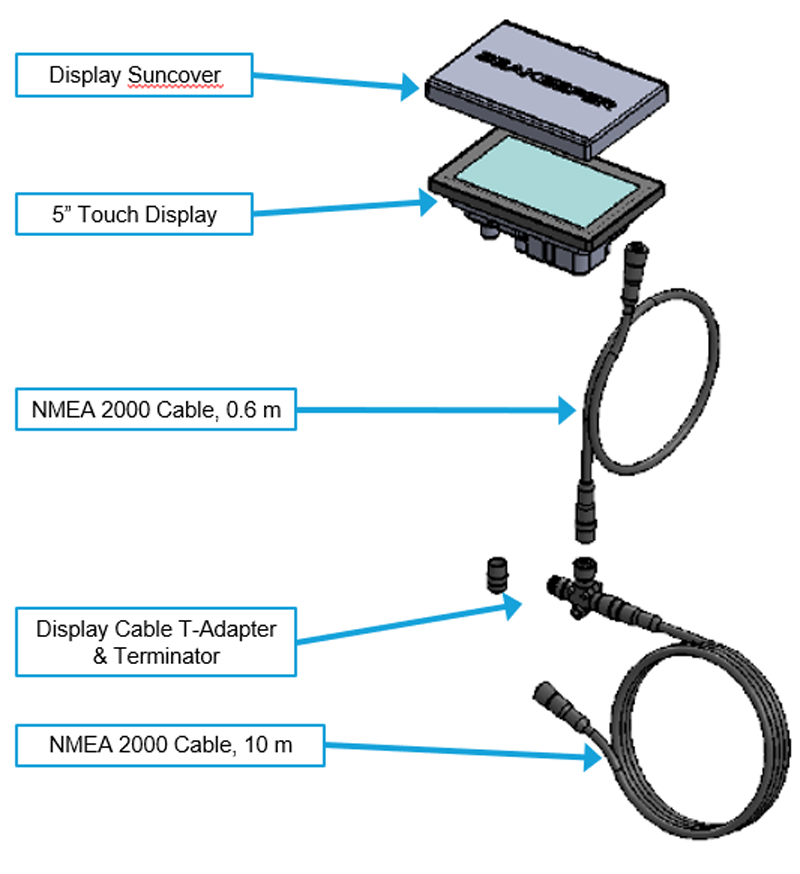
P/N 90467
- Determine location of Seakeeper 5” Touch Display:
- The desired location of the 5” Touch Display must be determined with respect to the vessel’s arrangement.
- The 5” Touch Display should be located on or near the helm or another easily accessible location.
- Route CAN communications cable:
- The CAN Cable, (labelled NMEA 2000 Cable in figure above), is a 32 ft (10 m) shielded cable that connects the ConnectBox Tee adapter to the 5” Touch Display.
- The NMEA 2000 cable must be routed and installed in the vessel from the Seakeeper 6 wire harness CAN Tee to the Tee Adapter at the Seakeeper 5” Touch Display, included with P/N 904670.
- Install Seakeeper 5″ Touch Display equipment:
- Console space required: Approx. 5.24 W x 3.70 H in. (133 x 94 mm)
- Mounting Instructions, Surface Mount: see Envelope and Mounting Details, in Drawing No. 90438 – 5” Display Envelope and Mounting Details.
- CAN communications tee adapter and terminator mounting instructions:
- Console space required, Rear: Approx. 4 W x 3 H in. (102 x 76 mm)
- Mounting Instructions: Rear mount on vessel console panel, within 2 ft (0.6 m) of Display.
- Hardware required: One mounting screw for 0.197 in. (5 mm) diameter mounting hole on Tee Adapter.
- Connect Seakeeper 5” Touch Display Equipment:
- The Seakeeper 5” Touch Display is connected in accordance with figure below.
- The USB Extension Cable is 6.5 ft (2 m) long cable that enables software updating on a 5″ Touch Display where accessibility to rear panel is limited.

NMEA 2000 Network Connection
The Seakeeper 6 / 5 requires a connection to the vessel’s NMEA 2000 network backbone via a drop cable for access to the GPS signal. The Seakeeper 6 will monitor information on the NMEA network to support and optimize the performance of the Seakeeper 6. If no GPS signal is detected, a warning will appear on the Seakeeper display. The Seakeeper will not spool-down, but the operation of the unit will be limited until the GPS signal returns.
- Install customer-supplied NMEA 2000 Tee Adapter (space required: approximately 4 W X 3 H in. (102 X 76 mm).
- Connect NMEA Backbone to Tee Adapter.
NOTE: NMEA drop cable can be no longer than 19.6 ft (6 m) in length. - Connect Seakeeper-supplied NMEA cable (P/N: 30332) to the customer-supplied NMEA 2000 Tee Adapter on vessel’s NMEA 2000 backbone.
- An active NMEA 2000 compatible GPS signal is required on the vessel’s NMEA 2000 backbone to operate the Seakeeper 6.
- If no GPS signal is detected, a Speed Over Ground (SOG signal) warning will be present on the Seakeeper app. See TB-90640 for NMEA connectivity guidance.
- An active NMEA 2000 compatible GPS signal is required on the vessel’s NMEA 2000 backbone to operate the Seakeeper 6.
ConnectBox Helm Mounting – Optional
- Console space required: Approx. 3.41 L x 4.15 W in. (87 x 106 mm).
- Mounting Instructions, Surface Mount: See Drawing No. 90558 – Seakeeper ConnectBox Helm Mounting Kit, for details. Seakeeper ConnectBox 3D Model available upon request.
- Mount ConnectBox Replacement Blank insert into Seakeeper 6 / 5 top cover at the original location of the ConnectBox.